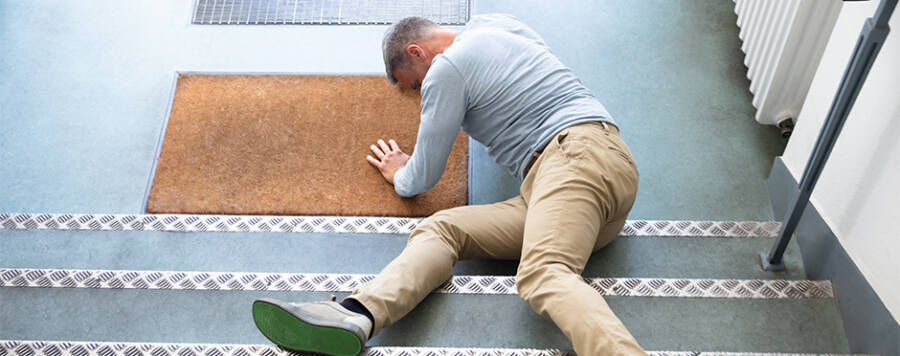After a fall, most don’t realize that the mental load and anxiety can be just as taxing as a physical injury itself, especially when the person becomes afraid of falling. Fear of falling is the number one risk factor related to falls each year. This fear may cause a person to feel much more cautious, causing them to cut down on their everyday activities and become less active, resulting in a lower quality of life, weaker muscles, and ultimately increased chances of falling again.
How To Overcome The Fear Of Falling
- Get evaluated by your local physical therapist and movement expert. The personalized attention and individualized plan may be just what your confidence needs to feel safe and ready to take on new activities and resume daily tasks.
- Exercise is one of the most important ways to combat balance issues, build strength, and improve flexibility.
- There are a lot of tools that can help reduce the risk of falling. Your therapist can help evaluate the need for modifications or assistive devices.
- Remove obstacles or tripping hazards such as loose carpets or rugs, and increase the lighting in your home, especially at night.
A fear of falling is natural and can help keep us safe, but if these worries start to inhibit your daily life, cause you to avoid doing things you love, or start to hinder your independence, we can help! Teamwork is a powerful thing, so know that you don’t have to face it alone. If you’re unsure where to start when it comes to building a fall prevention plan, reach out to your local Athletico to schedule a free assessment. Free assessments are available in person and virtually through our telehealth platform.
*Per federal guidelines, beneficiaries of plans such as Medicare, Medicaid, Tricare, VHA and other federally funded plans are not eligible for free assessments.
The Athletico blog is an educational resource written by Athletico employees. Athletico bloggers are licensed professionals who abide by the code of ethics outlined by their respective professional associations. The content published in blog posts represents the opinion of the individual author based on their expertise and experience. The content provided in this blog is for informational purposes only, does not constitute medical advice and should not be relied on for making personal health decisions.
References:
1. Wang S, Miranda F, Wang Y, Rasheed R, Bhatt T. Near-Fall Detection in Unexpected Slips during Over-Ground Locomotion with Body-Worn Sensors among Older Adults. Sensors (Basel). 2022 Apr 27;22(9):3334. doi: 10.3390/s22093334. PMID: 35591025; PMCID: PMC9102890.
2. Ghaffari-Rafi A, Horak RD, Miles DT, Eum KS, Jahanmir J. Case Report on Fear of Falling Syndrome: A Debilitating but Curable Gait Disorder. Am J Case Rep. 2019 Oct 29;20:1587-1591. doi: 10.12659/AJCR.918879. PMID: 31659147; PMCID: PMC6839539.
About the Author:
Kimberly (Kimi) Smith is a Vestibular Physical Therapist with Athletico, specializing in treating vertigo and post-concussions. The "dizzy population" is her passion, having treated this population since 2012. Combining her love for athletics and her Physical Therapy profession has been the main focus of Kimi's career. As a former CCWHA hockey player, she enjoys educating athletes on the importance of injury prevention and healthy training to improve their competitive abilities. The team approach to concussion management has led her to become a respectful resource in the area.

 width="900"
height="356"
>
width="900"
height="356"
>
